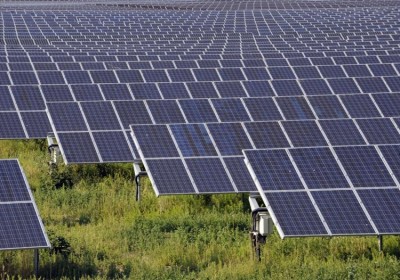
A recent action by the state of California demonstrates how unreliable the electric grid has become – but also foreshadows the future of electricity in America.
The California Public Utilities Commission (CPUC) is requiring utilities to start storing large amounts of electricity in batteries as a backup for the grid in what would become a revolutionary effort.
The CPUC wants the Golden State’s three largest electric utilities — Pacific Gas & Electric (PG&E), San Diego Gas & Electric, and Southern California Edison, to have facilities capable of storing 1,325 megawatts of electricity online by 2024. That would be a huge leap in technology, because currently only about 140 megawatts is capable of being stored on a large scale. One megawatt is enough electricity to power around 200 homes.
“This decision represents an important first step in encouraging the storage market and supporting grid reliability,” Commissioner Carla J. Peterman said. The Commissioners mentioned green energy but it is clear that their major concern is the unreliability of the grid and possible shortages of electricity, which the historic drought has highlighted.
The Future Begins Now
California could be facing shortages of electricity in the near future because of the closure of power plants, Commissioner Mike Florio said.
“As California looks ahead to meeting needs due to the closure of the San Onofre Nuclear Generating Station and retirement of conventional generation, I look forward to the role that energy storage can begin to play in our mix of resources,” Florio said.
Harness the power of the sun when the power goes out…
Battery storage on a large scale currently doesn’t play a major role in the electric grid because the technology does not yet exist to store electricity and power towns and cities. Large-scale battery storage also can be very expensive; the world’s largest battery backup for a power plant in China cost $500 million to build. The estimated cost of CPUC’s battery plan is $5 billion.
Drought Makes Project More Important
Hydroelectric plants provide about 15 percent of the Golden State’s electricity, and the mega-drought has challenged the state’s capacity to keep on the lights.
In fact, the only thing keeping the lights on in some parts of California is solar power, which combined with wind power is now providing enough electricity to make up for the lack of hydroelectric power. State officials say solar and wind have come to the rescue.
“We’re going to have enough power to keep the lights on: We are not concerned about blackouts or outages,” Robert Weisenmiller, the chairman of the state’s Energy Commission, told The San Jose Mercury News.
One thousand megawatts of solar-generated electricity was added to California’s grid in the last year, Weisenmiller said. The Solar Energy Industries Association says California has 2,926 megawatts of solar power in operation. The ability to store that power on a long-term scale will further revolutionize the grid.
“Storage is a game-changer that can help people manage their energy use and expand the capacity of renewable resources to provide power to homes and businesses,” said Commissioner Catherine J.K. Sandoval.
Sign up for Off The Grid News’ weekly email and stay informed about the issues important to you










